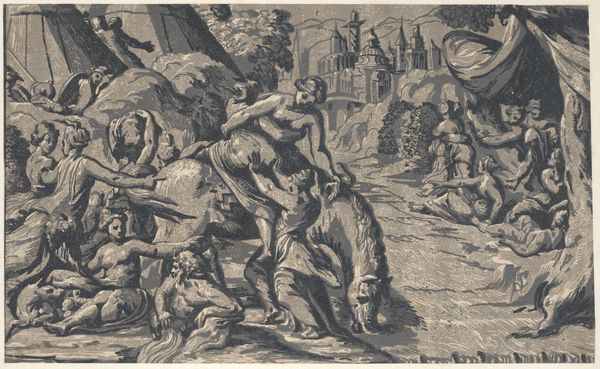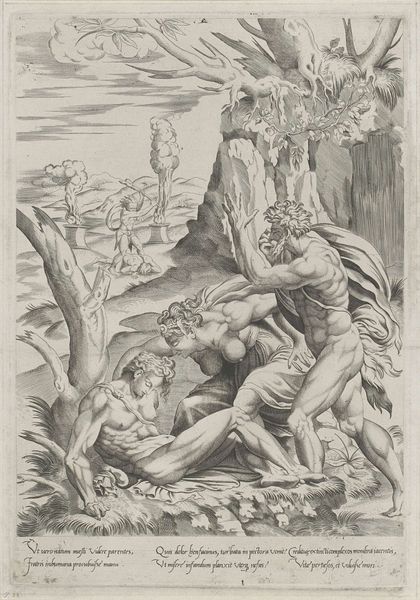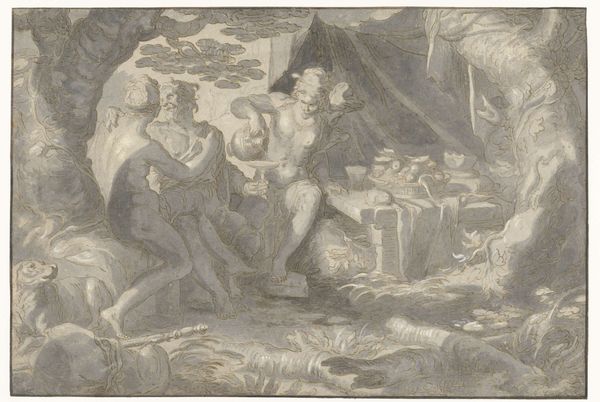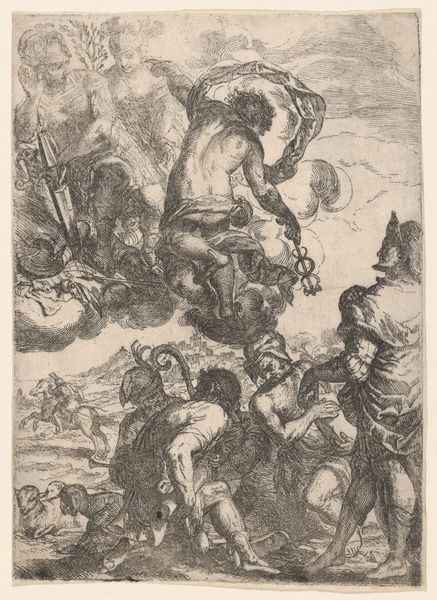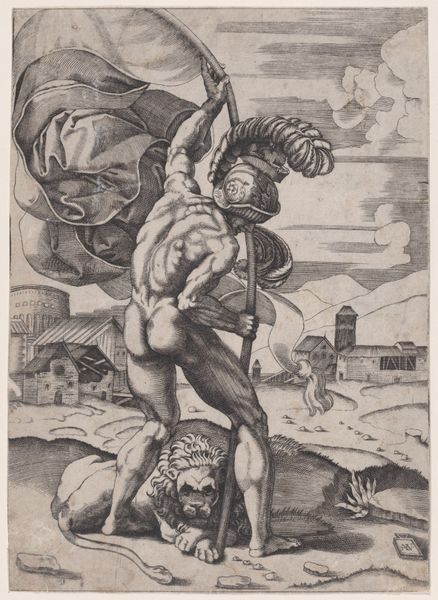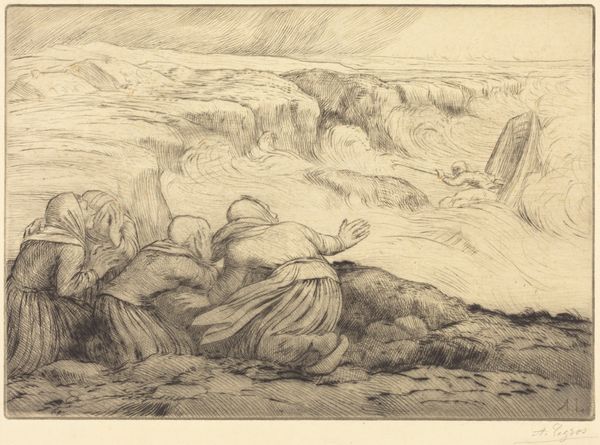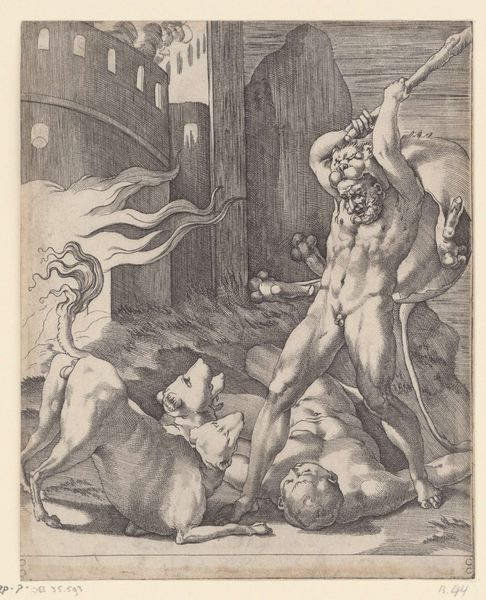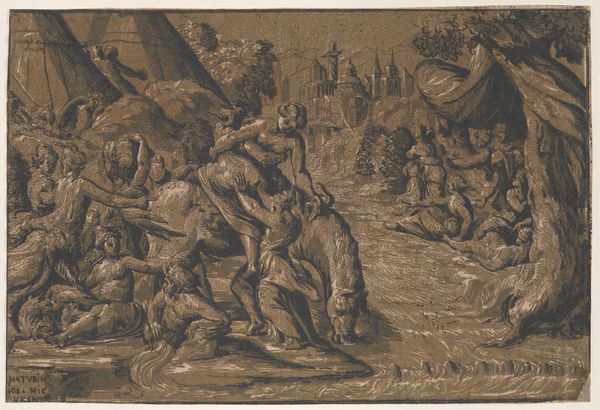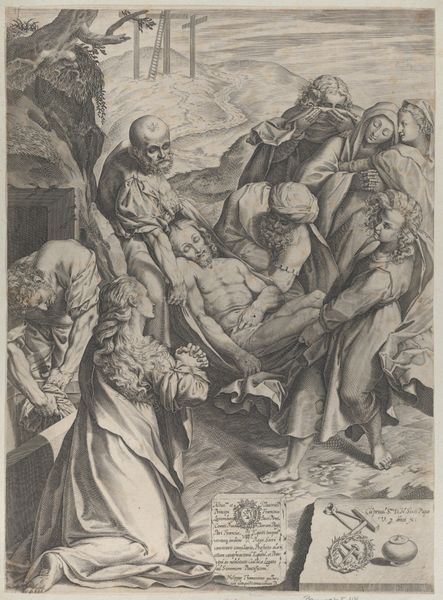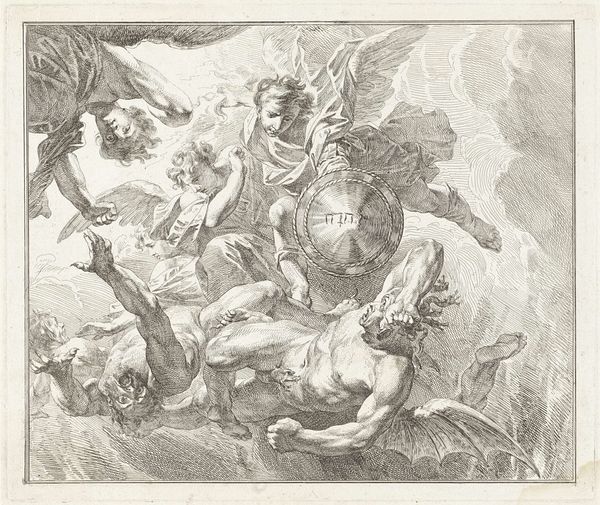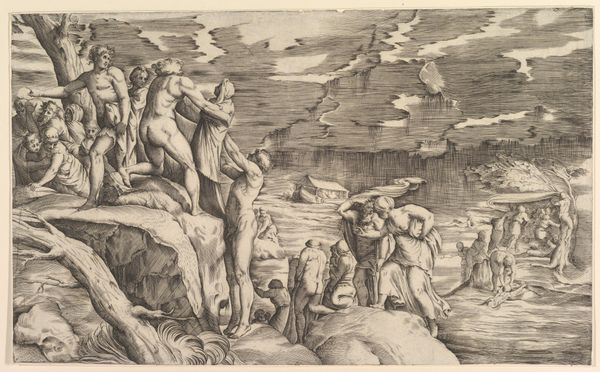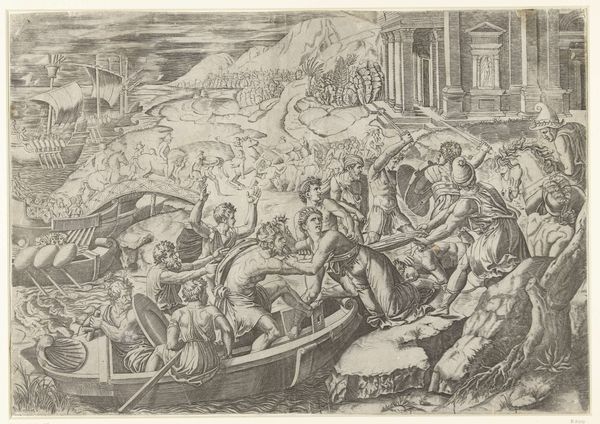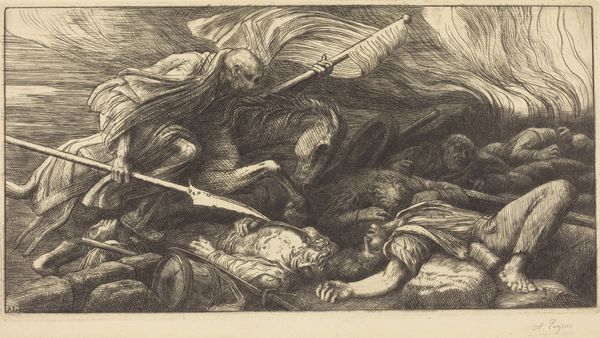
The deluge, figures being pulled from the water 1600 - 1650
0:00
0:00
drawing, print, engraving
#
drawing
#
baroque
# print
#
figuration
#
line
#
history-painting
#
engraving
Dimensions: Sheet: 9 1/16 × 11 5/16 in. (23 × 28.7 cm)
Copyright: Public Domain
Editor: So, here we have Pietro Testa's "The Deluge, figures being pulled from the water," an engraving dating from somewhere between 1600 and 1650. It’s currently at the Met. I'm struck by the desperation etched into every figure – literally, I suppose, given the medium. What do you see in this piece beyond just a biblical flood narrative? Curator: I see a powerful commentary on social hierarchies and the precarity of life. Look at the figures: the muscular men struggling to rescue limp bodies of presumably younger women. Who is afforded the possibility of rescue, and who is deemed disposable? Testa, working in the Baroque period, taps into anxieties about power, gender, and the body during a time of immense social upheaval. Consider how the patriarchy dictates their actions. The male figures seem to save the females, but we can ask: From what are they really saving them, and into what system are they saving them back into? Editor: That’s interesting. I hadn't considered it in terms of gender roles. It seemed straightforwardly about human suffering in the face of nature's wrath. Are you saying he’s critiquing something beyond just the flood itself? Curator: Absolutely. Think about the period's artistic conventions. The male figures embody a very specific type of idealized, masculine form, the kind often associated with leadership and dominance. This is emphasized through stark lighting and their exaggerated musculature. Is this an ideal, or an indictment? Furthermore, consider the gaze of the viewer, are we invited to witness or to participate? How does Testa employ our potential discomfort to make a statement on disaster? Editor: I see what you mean. Now that you point it out, there’s a disturbing element to it all. Like, are these figures really heroic, or are they just reinforcing the power structures that contributed to this catastrophe in the first place? Curator: Precisely. This interpretation shifts our understanding from simple representation to a potent social critique. It reveals that in every catastrophic situation, there's an undercurrent of social imbalance dictating the experience. Editor: That really makes me look at the piece in a completely new light. It's more complex than I initially thought. Curator: Agreed. Art like this forces us to confront the uncomfortable truths woven into the fabric of society, even, and perhaps especially, during moments of crisis.
Comments
No comments
Be the first to comment and join the conversation on the ultimate creative platform.
